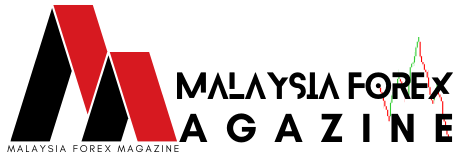Fibonacci retracement is one of the most popular tools used by Forex traders to identify potential reversal levels and pinpoint key areas of support and resistance in the market. It is based on the Fibonacci sequence, a mathematical principle that appears in various aspects of nature, finance, and trading. In this article, we will explore how to effectively use the Fibonacci retracement tool in your Forex trading strategy to maximize profits.
What is Fibonacci Retracement?
Fibonacci retracement levels are horizontal lines that indicate where support and resistance are likely to occur. These levels are derived from the Fibonacci sequence, with key levels being 23.6%, 38.2%, 50%, 61.8%, and 100%. These percentages are drawn on a price chart between two points (usually a significant high and low) to identify potential reversal zones.
Traders use Fibonacci retracement to find points where the price is likely to retrace (or pull back) before continuing in the original direction of the trend. This tool is particularly useful in trending markets and can help traders enter trades at optimal points, either to ride the trend or trade reversals.
How to Use Fibonacci Retracement in Forex Trading
- Identify the Trend Before using Fibonacci retracement, it is crucial to identify the prevailing trend in the market. You can use tools like moving averages or simply observe the price action to determine whether the market is in an uptrend or a downtrend. Once the trend is clear, you can apply the Fibonacci retracement tool to the trend’s significant price swing.
- In an uptrend: Identify the low point (swing low) and the high point (swing high) to draw the Fibonacci retracement levels.
- In a downtrend: Identify the high point (swing high) and the low point (swing low) to apply the Fibonacci retracement tool.
- Draw Fibonacci Levels Once you’ve identified the swing high and swing low, apply the Fibonacci retracement tool on your trading platform. The tool will automatically plot the key Fibonacci levels (23.6%, 38.2%, 50%, 61.8%, and 100%) between these two points.
- In an uptrend: The retracement levels will show where the price might pull back before continuing higher.
- In a downtrend: The levels will show where the price might retrace upwards before continuing lower.
- Identify Key Levels of Support and Resistance After plotting the Fibonacci retracement levels, the next step is to identify which levels may act as strong support or resistance. The most commonly used levels are the 38.2%, 50%, and 61.8% retracements.
- Support levels: In an uptrend, Fibonacci retracement levels act as potential areas where the price may find support and resume its upward movement.
- Resistance levels: In a downtrend, these levels act as potential areas of resistance where the price may encounter selling pressure and continue its downward movement.
- Combine Fibonacci Retracement with Other Technical Indicators For a more accurate analysis, it is advisable to combine Fibonacci retracement with other technical tools such as moving averages, trendlines, or oscillators (like the RSI or MACD). This helps to confirm whether a specific Fibonacci level is a strong area of support or resistance. For example:
- If the 50% retracement level coincides with a key moving average or trendline, it increases the likelihood that this level will hold as support or resistance.
- If the RSI is in overbought or oversold territory near a Fibonacci retracement level, this can further validate a reversal.
- Look for Trade Setups Near Key Levels Once you have identified a key Fibonacci level that aligns with other technical indicators, you can begin looking for trade setups. For instance:
- Buying at Support: In an uptrend, if the price retraces to a key Fibonacci level (e.g., 38.2% or 50%) and shows signs of bouncing back (e.g., bullish candlestick patterns), you may consider entering a long position.
- Selling at Resistance: In a downtrend, if the price retraces to a key Fibonacci level and starts to reverse (e.g., bearish candlestick patterns), you can enter a short position.
- Set Stop Loss and Take Profit Levels Managing risk is a critical part of any successful trading strategy. When using Fibonacci retracement levels, you can set your stop-loss orders just below the retracement level you’re trading off (in an uptrend) or just above the level (in a downtrend). For take profit levels:
- In an uptrend: Target previous swing highs or resistance levels, or use Fibonacci extension levels to project potential price targets.
- In a downtrend: Aim for previous swing lows or use Fibonacci extensions to estimate the next major price level.
- Look for Confluence Confluence occurs when multiple technical indicators or tools suggest the same outcome. For example, if a Fibonacci retracement level lines up with a trendline, a moving average, and a prior support/resistance level, it increases the probability that the level will hold. The more factors pointing to the same conclusion, the stronger the setup.
Tips for Maximizing Profit with Fibonacci Retracement
- Don’t Rely on Fibonacci Alone
While Fibonacci retracement is a powerful tool, it should never be used in isolation. Always look for additional confirmation from other indicators or price action patterns to improve your chances of success. - Be Patient
Patience is key when trading with Fibonacci retracement. Wait for the price to retrace to the desired level and show signs of a reversal before entering a trade. Rushing into a trade without confirmation can lead to unnecessary losses. - Use Multiple Time Frames
Fibonacci retracement works best when used across different time frames. A key level on a higher time frame (e.g., daily or weekly chart) is often more significant than one on a lower time frame (e.g., 15-minute chart). Use the retracement tool on multiple time frames to increase the accuracy of your analysis. - Monitor Economic News
Fundamental factors, such as economic data releases or central bank announcements, can have a significant impact on market movements. Keep an eye on major events that could influence price action, and be cautious if you’re near a Fibonacci level during high-impact news.
Conclusion
Fibonacci retracement is a valuable tool that can help traders identify potential reversal points and make informed decisions in the Forex market. By using Fibonacci levels in conjunction with other technical analysis tools and maintaining a disciplined approach, you can increase your chances of success and maximize your profits. Always remember to manage your risk carefully by setting appropriate stop-loss levels and aiming for realistic profit targets based on market conditions.
With consistent practice and analysis, Fibonacci retracement can become an integral part of your Forex trading strategy, helping you make more precise entries and exits while minimizing risk.











